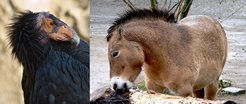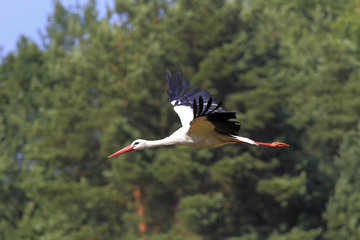Max Planck researchers urge more prominent role for zoos
Zoological gardens breed animals from threatened populations and can thus make a greater contribution towards biodiversity conservation.
Around one in seven land vertebrate species, whose survival in the wild is threatened, are kept in captivity. These and other data on the protection of species in zoos and aquaria have now been revealed by scientists at the Max Planck Institute for Demographic Research (MPIDR) in Rostock. Writing in the journal Science, the team of researchers and the International Species Information System (ISIS) advocate the establishment of targeted captive breeding programmes to supplement the protection of animals in the wild. To do this, zoos should team up in networks and shelter these animals, as a form of life insurance, until they can be released back into the wild.

The researchers used data from the International Species Information System (ISIS) to calculate how many of the endangered species can already be found at zoological gardens: 20 to 25 percent of all endangered mammal species are kept at zoos. The overall figure for birds is only slightly less than that, but is much lower for avian species that are acutely at risk of extinction: only nine percent of these are found in captivity. Only three percent of endangered amphibian species are kept in captivity.
The role of zoos for species conservation must not be underestimated, Dalia Conde, Fernando Colchero, Owen Jones and Alexander Scheuerlein have stressed. "While it is true that the number of endangered species and individual animals at any one zoo is small, if several institutions link up, zoological gardens will have a considerable collective potential to breed endangered animal species."
Specialist zoos for greater breeding success
The Science authors advocate the establishment of “specialist zoos” that concentrate on breeding just one or a small number of species: “Specialisation generally increases breeding success”, say Conde and Scheuerlein. “The animals can be ‘parked’ at these zoos until they have a chance of survival in the natural environment and can then be returned to the wild.” Nate Flesness, who is the scientific director of the largest database of zoo information (ISIS), and is also co-author of the paper, stressed that it also makes a lot of sense to include animals in breeding programmes at an early stage, before their stocks in the wild decline too much. He said, “Zoos should not be regarded as a last-resort emergency ward, because the chances of successful breeding are decreased if the last surviving, weakened individuals of a species need to be used for this purpose.”
Recently, the International Union for Conservation of Nature (IUCN) has also determined how successful captive breeding is at supporting species protection: breeding at zoos has played a key role in 17 of the 68 vertebrate species whose risk status has now been downgraded by the organisation. Examples of these success stories include the Asiatic wild horse (Przewalski’s horse), the black-footed ferret (a member of the mustelid family) and the Californian condor.
Breeding programmes at zoos also deliver new demographic data which are useful in species conservation: When is the onset of sexual maturity in an animal species? What is its litter or clutch size? At what intervals does a species reproduce? “Such fundamental data on their demographic development are unknown for many species”, say Colchero and Jones. “However, they are urgently needed to allow us to estimate the future fate of a species and its chances of survival in the wild”.
SL/HR












